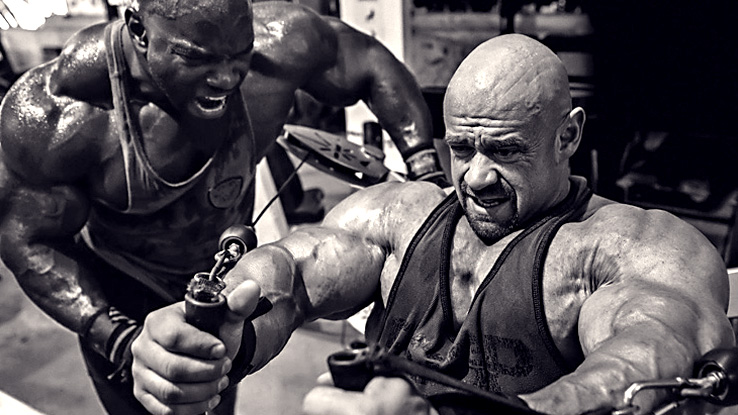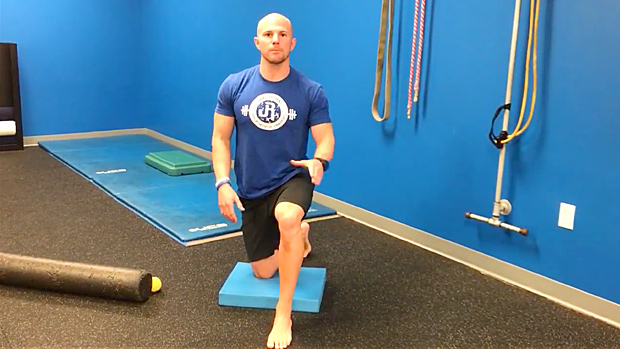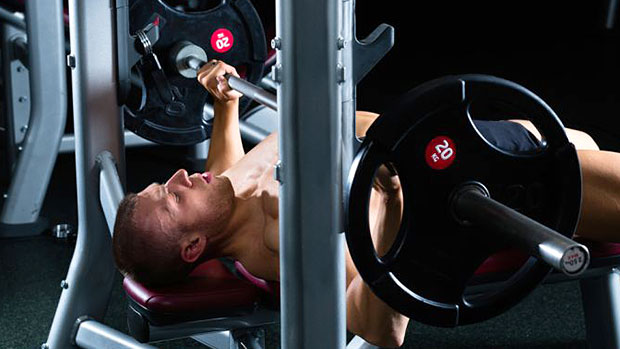The one-leg deadlift is an incredible exercise that can boost symmetry and build single-leg strength – all while minimizing loading. That means it'll take good care of your low back, strengthen your core, and make you a sugar-footed ninja.
Too bad that it's so often a disaster. It's time to lay down some guidelines for perfect execution and fix some common problems.
Back in 2000, a major fitness magazine showcased a version of the one-legged Romanian deadlift (RDL) where the rear leg was lifted way off the ground, sort of like one of those old drinking-bird toys. The rest of the world just seemed to follow suit without really questioning why.
Here's the thing, though – the one-legged RDL wasn't designed for balance training; it's for building single-leg strength.
The "rear leg lifted high" variation might be fine for warm-ups and general mobility, but when it comes to strength training, you're better served by stripping the balance demands away and focusing on strength.
The Fix
Keep your rear foot on the ground using the kickstand method:
Here are three effective alternatives:
Drag it
In this variation, you'll keep your rear foot lightly touching the ground and slide it straight back. Your challenge is to slide the foot straight back without any weight transfer on it.
Float it
Here you have two options for keeping weight off of the passive leg – either by setting up a "kickstand" as shown in the first video or by using one of Ian King's original variations.
Get it out of the way
Clear the passive leg without giving up balance by doing the corner-leg version.
Even though the hips are supposed to remain level (indeed, countering the forces of rotation provides much of the value here), almost everyone will externally rotate the unloaded leg.
This is usually due to a lack of awareness, but may also be the result of insufficient hip internal rotation. Most of the rear-foot-on-the-ground variations described above will deal with this but there's some additional work to be done.
The Fix
Pause after the eccentric (lowering) portion of the lift to check your position. Are you able to tell whether you're level? To check in on position, make sure the rear knee and foot are both pointed down toward the ground. Also, make sure that your thighs are touching or – to bastardize a deadlifting cue from the great Ed Coan – "seal up your taint."
Initiating the lift with leg drive is something that should be happening with any deadlift variation. However, once the one-legged RDL became known as a functional training exercise, people stopped (or never started) caring about great fundamental mechanics, which is pretty ironic.
It's common to see people arch their backs to get the weight moving. This compensation is an easy trap to fall into – especially when you're holding a teeny, tiny weight.
The Fix
Oscillate the first 2 inches of the lift.
This surprisingly challenging drill requires you to flex and extend the knee with a tiny range of motion. You'll practice initiating the movement and reversing it over and over again with only a 2-inch range of motion. If you're doing this right, your low back will be silent and your quads will be screaming.
You might be able to execute very clean reps with a light load. However, you can do all sorts of things with a light load. Once you put some real weight in your hands – particularly with a barbell – you might notice that countering any extra movement becomes more difficult.
The Fix
Shift the load laterally.
This is a subtle tweak that can make a big difference. When you're on one leg, your center of mass has to be stacked. But it can't be stacked on top of air. For proper alignment, you have to do two things:
- Shift your bodyweight laterally to stack your center of mass over the middle of your planted foot.
- Line up the middle of the bar with the middle of your shin (on the loaded leg).
Once your form is in place, don't forget to load the movement.
The Fix
Add load and/or range of motion.
If you're going to push boundaries, your first step is to figure out where those boundaries are. While adding weight is an obvious choice, you may also want to add range of motion by growing this into a hybrid movement – somewhere between an RDL and a full-range of motion deadlift.
You can do this simply by completing the RDL (hinge) portion of the movement and then adding some knee flexion. To make balance even less of a factor, you can perform this as you would a rack pull. This will allow you to load things up with a barbell and reset your balance and positioning at the bottom of every rep.
In spite of the huge value of the one-leg RDL (and variations), I actually spent a long time not programming it. The time involved in getting people to move well AND load it simply wasn't worth it. It wasn't until I began to explore variations like the ones included here that it finally became worthwhile.
The RDL was introduced to Americans by Dragomir Cioroslan in 1991. Cioroslan was a former Olympic medalist in Olympic lifting, then employed by the US Weightlifting Federation. He didn't call it a Romanian deadlift, though, because, well, he was Romanian and that was just too on the nose. The "Romanian" tag came later from someone who's been lost to history.
More importantly, curmudgeonly but brilliant strength coach Ian King was in attendance when Cioroslan introduced the movement. King – who largely started the conversation about structural balance – had been building a stable of hip-dominant unilateral exercises and he felt the one-legged RDL fit the bill perfectly. So, after months of experimentation, King began to teach it.
And now you know.




